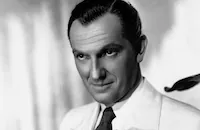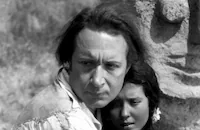Orphans of the Storm

Brief Synopsis
Cast & Crew
D. W. Griffith
Lillian Gish
Dorothy Gish
Joseph Schildkraut
Frank Losee
Katherine Emmett
Film Details
Technical Specs

Synopsis
Louise is taken to Paris by her adopted sister, Henriette, to cure her blindness. Henriette is abducted by a marquis but is rescued by another aristocrat. Louise falls into the clutches of a beggar woman; Henriette and her lover are sentenced to the guillotine, but fortunately Danton comes to their rescue.

Director

D. W. Griffith
Cast

Lillian Gish

Dorothy Gish

Joseph Schildkraut
Frank Losee
Katherine Emmett
Morgan Wallace

Lucille La Verne
Sheldon Lewis

Frank Puglia
Creighton Hale
Leslie King

Monte Blue
Sidney Herbert
Lee Kohlmar
Adolphe Lestina
Kate Bruce
Flora Finch

Louis Wolheim
Kenny Delmar
Herbert Sutch
James Smith
Rose Smith
Crew
Paul Allen
G. W. Bitzer
Louis F. Gottschalk
D. W. Griffith
D. W. Griffith
Charles M. Kirk
William Frederick Peters
Hendrik Sartov
Edward Scholl
James Smith
Rose Smith
Herbert Sutch
Marquis De Trolignac
Frank Wortman

Videos
Movie Clip


Hosted Intro
Film Details
Technical Specs

Articles
Orphans of the Storm
The sisters' destinies are again cataclysmically affected during their journey to Paris to see a doctor who will restore Louise's eyesight. The trip brings them into disastrous conflict with a decadent aristocrat, the Marquis de Praille (Morgan Wallace), and the slowly escalating mob violence of the French Revolution.
Lillian Gish first suggested that her frequent collaborator Griffith film the enormously popular play "The Two Orphans," which had been translated into 40 languages, thinking of her sister Dorothy in the role of the other orphan. Interestingly, Griffith cast Dorothy as Louise, the passive blind victim, when it was Lillian who was best known for playing helpless heroines. Most who knew her would attest that Dorothy was the more vivacious and strong willed of the two sisters. Lillian had written of her sister in 1927 "She is laughter, even on the cloudy days of life; nothing bothers her or saddens her or concerns her lastingly."
Griffith decided to enlarge the scope of the melodrama by weaving in historical details from the French Revolution including the historical figures Danton and Robespierre. He made every effort to be true to real events and took additional inspiration from A Tale of Two Cities by Charles Dickens and History of the French Revolution by Thomas Carlyle, which Lillian Gish noted every major player in the film studied. Carlyle's book was, in fact, also a major influence on Dickens, who took the incident of an aristocrat's carriage running over a small child from Carlyle's book (Griffith incorporated this into his film).
Griffith also used Orphans of the Storm as a means of commenting, obliquely, on contemporary politics of his time. He drew parallels between the anarchist mobs that overthrew the French aristocrats, and what he says in opening titles to the film are the present American dangers of succumbing to the kind of "anarchy and bolshevism" he perceived in the recent Russian Revolution. It is, of course, a great historical irony that those Bolsheviks Griffith railed against were quite smitten with the director's incomparable ways of generating film tension in crosscutting as well as his cinematic means of conveying good and evil via sophisticated editing and framing techniques. As the father of film syntax Griffith was an enormous influence on the Soviet filmmakers Sergei Einstein and Vsevolod Pudovkin, who were inspired by many of his films including the anti-Bolshevik Orphans of the Storm.
Orphans of the Storm was the last movie the Gish sisters made together and Lillian's last film for Griffith. The film received rave reviews including one in The Moving Picture World which gushed "No more gorgeous thing has ever been offered on the screen," but only moderate box office success, and a great deal of the film's thunder was stolen by the premiere one week later of Erich von Stroheim's Foolish Wives (1922). Silent film scholar William K. Everson has also attributed the film's lackluster box office to a change in audience tastes including their more jaded and cynical sensibilities, as well as the film's lack of a strong male star. But Griffith was determined to make a financially lucrative picture, and so changed aspects of the film after its New York run, toning down some of the violence and adding more comic elements which many critics felt incongruous with the film's dramatic features.
After the enormous success and popularity of the films Griffith made between 1915 and 1920, The Birth of a Nation (1915), Intolerance (1916), Hearts of the World (1918), Broken Blossoms (1919) and Way Down East (1920), Orphans signaled the end of Griffith's great epics as the popularity of his brand of melodramas began to wane. His later films never reached the money-making heights of his previous efforts.
Producer/Director: D.W. Griffith
Screenplay: D.W. Griffith, based on the play 'The Two Orphans' by Eugene Cormon and Adolphe d'Ennery
Cinematography: Paul H. Allen, G.W. Bitzer, Hendrik Sartov
Film Editing: James Smith, Rose Smith
Art Direction: Charles M. Kirk
Music: Louis F. Gottschalk, William F. Peters
Cast: Lillian Gish (Henriette Girard), Dorothy Gish (Louise Girard), Joseph Schildkraut (Chevalier de Vaudrey), Frank Losee (Count de Linieres), Katherine Emmet (Countess de Linieres), Morgan Wallace (Marwuis de Praille)
BW-116m.
by Felicia Feaster

Orphans of the Storm
Quotes
Trivia
Notes
The working title of this film was The Two Orphans. Additional material for this film was apparently drawn from Charles Dickens' A Tale of Two Cities and Thomas Carlyle's The French Revolution. According to contemporary sources a 12 reel, 12,000 ft. version of the film was released April 30, 1922. An earlier adaptation of the play Les deux orphelines was produced by Fox in 1915 under the title The Two Orphans, directed by Herbert Brenon and starring Theda Bara and Jean Sothern (see AFI Catalog of Feature Films, 1911-20).















